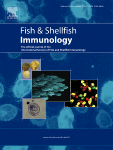Encapsulation Techniques to Enhance Astaxanthin Utilization as Functional Feed Ingredient

Abstract
Herein, the effectiveness of astaxanthin (AX) as functional feed ingredient was assessed by enhancing its stability and bioavailability using encapsulation methods. Spray-drying and liposome entrapment were applied to a natural AX source from shrimp by-products, along with two commercially synthetic alternatives. Encapsulated AX formulations were evaluated for their physico-chemical properties, thermal stability, and in vitro performance using RTL-W1, a rainbow trout (Oncorhynchus mykiss) liver-derived cell line. Both techniques achieved high encapsulation efficiency (73–89%) and provided remarkable protection to AX during thermal treatments, maintaining its stability at 80 °C for up to 2 h and at 100 °C for 30 min. Nevertheless, neither encapsulation methods significantly mitigated water absorption over time. Additionally, morphological characterization revealed spray-dried microcapsules with typical round, partially collapsed particles with a broad size distribution, while liposomes further stabilized into dry powders by spray-drying showed structural rearrangements and an increase in size upon rehydration, although maintaining a uniform and stable distribution. In vitro testing revealed enhanced RTL-W1 cell viability and reduced reactive oxygen species (ROS) production when encapsulation was employed. Overall, these findings demonstrate the potential of the selected encapsulation techniques to optimize the stability, bioavailability, and functionality of AX, providing valuable insights to improve its utilization as a functional ingredient in fish feed formulations.
